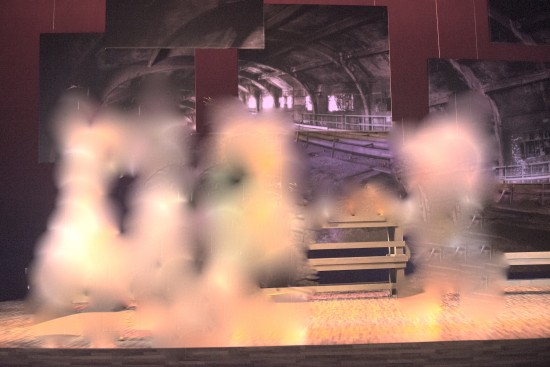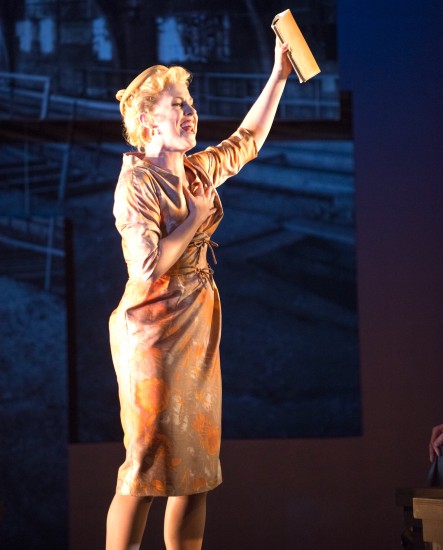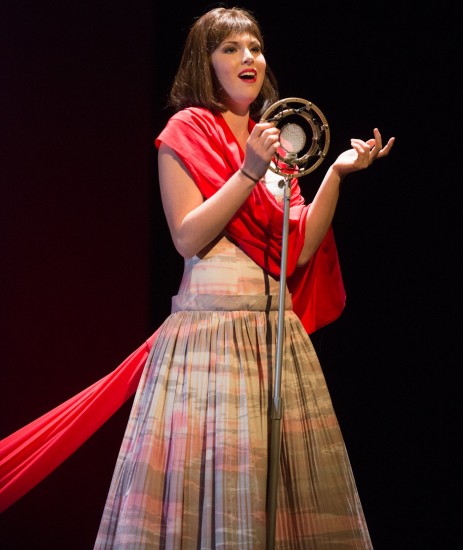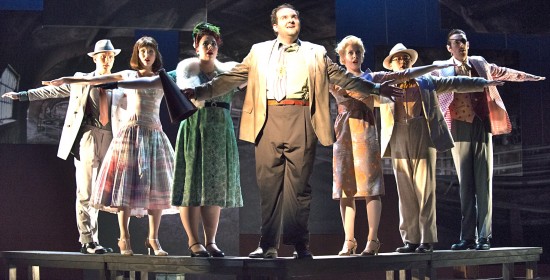Forty-one years ago I attended the World Premiere of Dominick Argento’s Postcard from Morocco. It was commissioned and performed by the Center Opera, an adjunct of the Walker Art Center, and the company evolved to the now well-known Minnesota Opera. It was my first experience with a “modern” opera, and I was fascinated by it, without quite knowing why.
A year later, in the 1972-73 season, they scheduled a repeat performance and I had the pleasure of inviting my parents to see it with me – the only time in my entire life that I shared with them an opera I had seen before and they hadn’t! I discovered then a fact that I have verified countless times since: with opera, familiarity does not breed contempt – it breeds increased appreciation.
All that was four decades in the past and memory has dimmed all of the details. But when I found out recently that Merola was presenting it this summer, I jumped at the chance and made immediate plans to see both performances. It’s still not easy to say what Postcard from Morocco “is”, so let me just describe Thursday evening, July 19, 2012.
I have a morbid fear of being late for a theatrical experience, and I had no idea what traffic or parking would be like on a Thursday. It turned out that traffic was light and there was a parking spot right next to the front door of the Cowell Theatre building, so I was picking up my Press Tickets more than an hour before the 8 pm curtain. Which meant that I was early even for the pre-opera talk that I hadn’t known about. The scattered tables and chairs in the lobby were mostly filled, but a neatly-bearded gentleman saw me looking for a seat and invited me to join his table.
I was impressed when he told me that he was the trombone player in the orchestra, and he was impressed when I told him I had been in the audience at the World Premiere of Postcard from Morocco. A pleasant start to the evening.
The pre-opera talk had a different format than those given by other opera companies. Thursday night a member of the Merola staff interviewed Director Peter Kazaras. Among other nuggets we were warned not to be alarmed when some non-English words appeared on the screen for one of the ballads. Dominick and his librettist John Donahue wanted the ballad to be foreign to everyone, so the words were simply sounds appropriate to the music.
I settled into my seat E1, which gave me a close view of the stage and an even closer view of the unusual 8-person orchestra. My new friend, Trombone Player Donald Kennelly, was directly in front of me, not 10 feet away but perpendicular so he would be facing the conductor. Beside him was Bass Player Andrew Butler. In front of their row were Clarinet/Saxophone Player Mike Corner and Guitar Player Paul Psarros. The front row of the six players on the audience-left side of the theatre were Violin Player Tatiana Freedland and Viola Player Patricia Heller. I couldn’t clearly see the audience-right side of the orchestra, but according to the program it consisted of Keyboards Player Sun Ha Yoon and Percussion Player Scott Bleaken.
The lights dimmed. Conductor Mark Morash mounted the podium to polite applause and turned to the orchestra.
The audience grew quiet, the curtain rose, and . . . nothing. The orchestra was silent; the stage was empty except for 4 movable backless benches; the only scenery was a back wall covered with a few posters showing the interiors of old-style European railroad stations.
The Man with a Paint Box enters the stage and looks about sort of aimlessly as if he wonders where everyone else is. He sits on one of the benches, gets up and tries another, and finally settles himself, gazing off into space with his face averted from the audience. Still no sound from the orchestra. The other six travelers enter one by one at the back of the stage and remain there, some of them semi-concealed, all of them silent and ignoring the others. A brief silence, then . . .
The Man with a Paint Box turns slowly towards the audience, his mouth wider open than one would think possible – his face a grimace of fear and terror as he apparently screams in agony. Emanating from the right side of the orchestra is the excruciating shrill sound of an old-fashioned steam locomotive whistle – I don’t know if it was a recording or a concoction from the electronic keyboard.
An instant of silence as the screaming whistle stops and the face relaxes, then everyone starts talking-singing at once with the orchestra playing appropriately discordant music as a background – and we are off. Off to where? Who knows? Does it matter?
For this opera is not about destinations or journeys. It is about people and the baggage they carry through life. The bags and boxes that we see on stage don’t hold prosaic travel items such as clean underwear, toothbrushes, and pajamas; they are symbolic for the owners’ emotional baggage. Their owners guard them possessively, and talk about their emotional contents. They don’t hear much of what anyone else says – and when they do it is only in a context of “how can I use this information.”
Each of the seven characters gets a chance to tell her or his story, starting with Suzanne Higden as the Lady with a Hand Mirror. She explains that she always travels with a hand mirror so she can see into cracks and dark corners, searching for possible menace.
Interspersed with the various self-realizations are scenes apparently intended for enjoyment, some of which involve one of the seven travelers taking on a different role. For example, Carolyn Sproule (Lady with a Hat Box) simply picks up a flowing red scarf to become an exotic Foreign Singer at one point.
Then we have a pair of puppets – a director’s delight with great scope of variation. Here their roles are assigned to the Man with Old Luggage (Andrew Stenson) and the Man with a Shoe Sample Kit (Joseph Lattanzi) who put on colorful robes and strap Punch and Judy type puppets to their heads. I might mention that the original program for the Premier performance lists those two travelers as “also a Puppet” – that program also lists “Two Mimes”.
Perhaps the most complex role is played by Matthew Scolin. As the Man with the Cornet Case, he is just one of the travelers. But he is more interested in talking about puppets than in the contents of his case. Further, from time to time he mesmerizes the other travelers and seems to control them as if they were his marionettes. This results in some interesting dance numbers – at one point he even has one of the travelers execute a perfect cartwheel! Kudos to Choreographer Melecio Estrella.
Finally, according to the Lady with a Cake Box; Aviva Fortunata, “I keep my beloved in a box … this box … my lover is in here at this moment … in this box … my lover is here … for safe keeping. He is in this box for safe keeping.” Does she mean it literally – is he imprisoned there like a genie in a bottle? Is he dead and cremated and here are his ashes? Is the box filled with photos and news clippings? We never know.
And there you have it: Postcard from Morocco by Dominick Argento. Disjointed, disconnected, incoherent? Yes, BUT. Remember an opera has music. Of course, the music is also disjointed, disconnected, incoherent. Sometimes it sounds like Wagner, like Gershwin, like Strauss . . . like Argento – you name it. Sometimes one instrument plays, sometimes two, sometimes all. Sometimes without singers, sometimes with one, or two, or all the singers. Often two or three or six singers are singing simultaneously, but each is singing his or her own words to her or his own melody, key, and rhythm.
Each element – music, singing, words, action – of the opera is chaotic, but at each instant of that chaos each element is in perfect harmony with each of the other elements, so that the resulting whole has a feeling of unity and fulfillment.
I sure hope I don’t have to wait another 41 years before I see it again!
Except as noted, all photos by Kristen Loken
This review by Philip G Hodge appeared in sanfranciscosplash.com on August 4, 2012.













